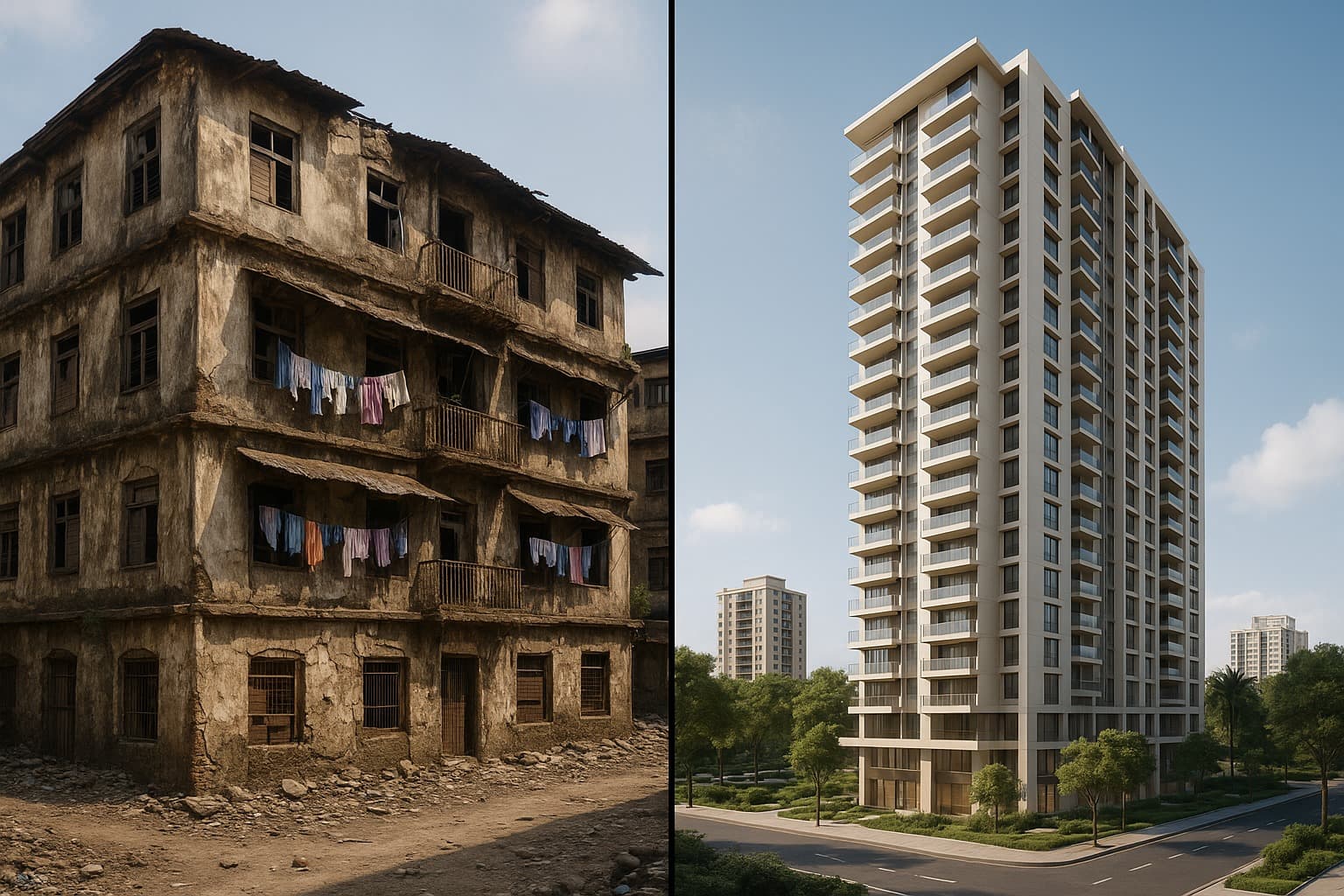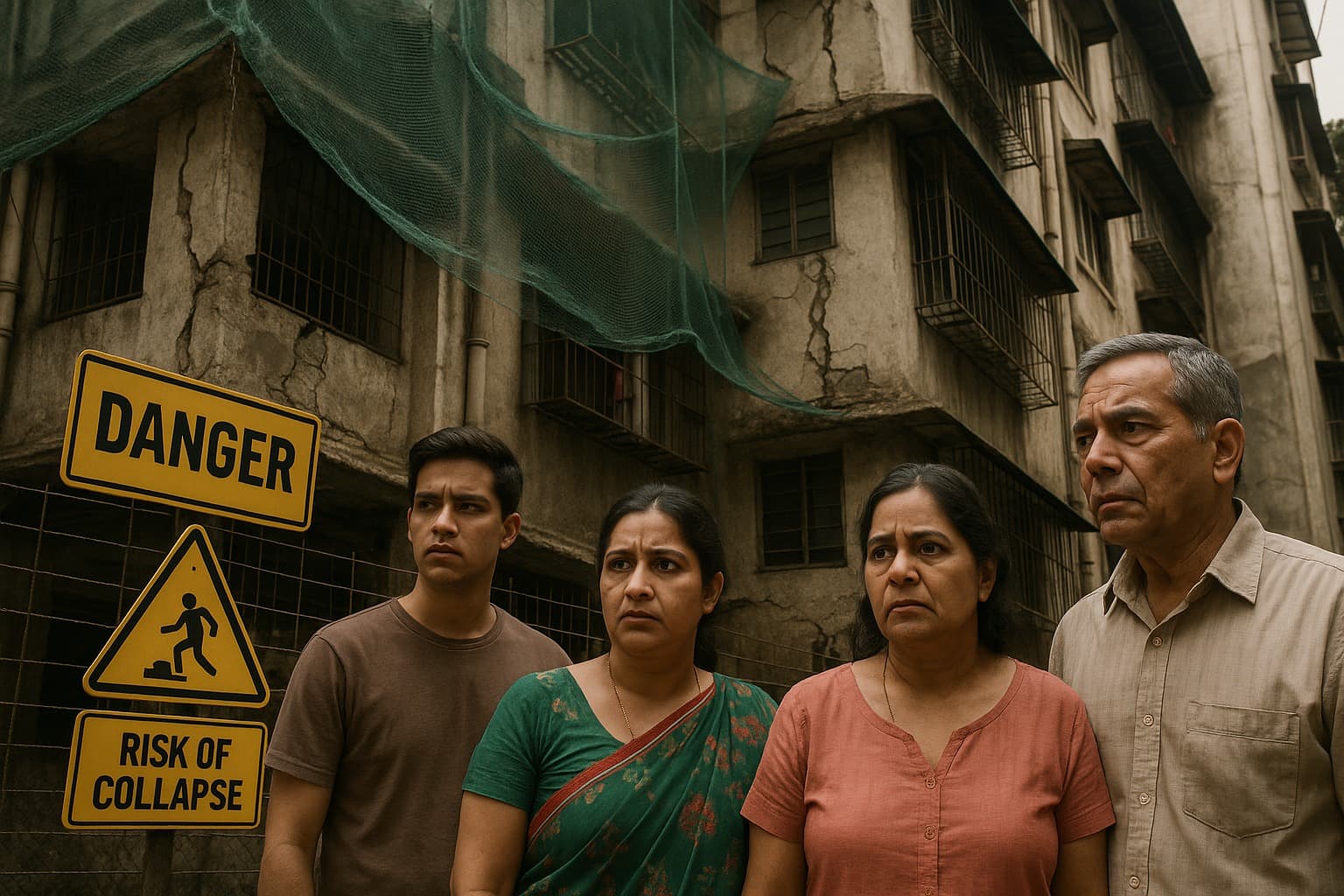Vasai Demolition 2025: A Wake-Up Call for Mumbai's Ageing Housing Societies
Summary
The 2025 Vasai demolition highlights risks in Mumbai's aging housing societies: structural decay, neglected maintenance, and delayed redevelopment. Proactive audits, funding, and timely action are crucial to prevent tragedy and protect lives and property.

Vasai’s Dilapidated Buildings Demolition 2025: A Stark Wake-Up Call for Mumbai’s Ageing Housing Societies
When news of the Vasai demolition reached Mumbai in 2025, it felt like a jolt—a mix of fear, shock, and disbelief. For decades, residents in Vasai lived among crumbling walls, leaking roofs, and unstable structures, never imagining that their homes could one day become life-threatening hazards. And yet, that day came. The authorities, after repeated warnings and inspections, carried out a demolition drive targeting dilapidated buildings, prioritizing public safety over sentiment. Families were displaced, memories shattered, and dreams uprooted.
For Mumbai, this is more than a suburban story—it’s a mirror reflecting the vulnerabilities of the city’s ageing housing societies.
The Vasai Demolition: A Human and Structural Crisis
Vasai, once known for its serene environment and affordable housing, had clusters of buildings constructed in the 1980s and 1990s. Over the years, these structures faced:
Water seepage that weakened foundations Rusted beams and corroded reinforcements Cracks spreading across walls and ceilings Non-compliance with modern safety standards
Despite warnings from engineers and municipal authorities, residents delayed action, citing costs, paperwork, or personal reluctance. By 2025, the Municipal Corporation had no choice but to act. The demolition, though necessary, displaced entire families, forcing them to scramble for temporary housing.
This stark scenario serves as a warning for Mumbai’s thousands of ageing housing societies—neglect today could mean catastrophe tomorrow.
Why Mumbai’s Ageing Societies Are at Risk
Mumbai’s real estate landscape is dominated by housing societies built 20–40 years ago. Many of these complexes were constructed without foresight for long-term durability, often with substandard materials or minimal maintenance.
Key risks include:

Structural Degradation: Roofs sag, columns weaken, and cracks widen over decades. Neglected Maintenance: Reserve funds often fall short, leaving societies unable to repair elevators, water tanks, or sewage lines. Legal Loopholes: Outdated approvals or lack of compliance with modern building codes exacerbate risk. Delayed Redevelopment: Residents fear costs, relocation, or complex agreements, pushing redevelopment decades later than necessary.
Vasai’s tragedy shows what happens when these risks converge—a preventable situation turning into a crisis.
Emotional Toll on Residents
The demolition was not just a structural or bureaucratic issue; it was profoundly human. Families who had spent entire lifetimes in their apartments found themselves uprooted in a matter of days. Children lost playgrounds, elderly residents were forced into temporary shelters, and sentimental possessions were either destroyed or hastily salvaged.
Many Mumbai residents can relate—think of grandparents’ homes in Ghatkopar, Mulund, or Borivali, built decades ago, showing cracks and wear. The fear of losing a home, the stress of temporary relocation, and the trauma of uncertainty is emotionally exhausting.
Vasai sends a clear message: maintaining and redeveloping buildings is not optional; it’s about protecting lives, memories, and families.
Real Estate Implications
The demolition also impacts the real estate landscape:
Property Devaluation: Dilapidated or unsafe buildings lose investor and buyer confidence, reducing market value. Redevelopment Opportunities: Societies that act early can attract developers, increase property value, and secure better living standards. Insurance Challenges: Insurers are hesitant to cover old, structurally weak properties, leaving homeowners financially exposed.
For Mumbai, proactive redevelopment is not just a safety measure—it’s a financial necessity to protect assets and communities.
Steps for Mumbai’s Housing Societies
Regular Structural Audits: Hire certified engineers for inspections every 3–5 years to detect risks early. Transparent Maintenance Funds: Build a robust reserve fund for repairs, waterproofing, and structural reinforcements. Timely Redevelopment: Engage developers and explore government or public-private partnership schemes. Legal Compliance: Ensure all municipal approvals, property titles, and building plans are updated and compliant with current codes. Resident Communication: Hold regular meetings to educate and involve all residents in decision-making.
Acting proactively can prevent tragedies and ensure smoother, safer redevelopment, preserving both lives and investments.
Lessons Beyond Vasai
Vasai’s incident is a cautionary tale for Mumbai:
Safety First: Structural integrity outweighs nostalgia. Waiting for a visible collapse is too late. Community Coordination Matters: Societies often stall redevelopment due to conflicts. Open dialogue saves lives. Government Support Is Critical: Authorities should assist in auditing high-risk societies and provide financial or technical guidance.

Mumbai is home to millions, and the city’s ageing housing stock requires collective responsibility, both from residents and regulators.
Personal Stories: Humanizing the Crisis
Take the Sharma family from Vasai: Mr. Sharma’s parents had lived in the apartment for over 30 years. They watched cracks expand along walls, but postponed repairs, thinking it “would last a few more years.” When the demolition happened, they lost not just a home but a lifetime of memories.
In Mumbai, similar stories exist across Byculla, Dadar, and Chembur, where residents face the dual challenge of aging infrastructure and high costs of redevelopment. Vasai is the wake-up call: prevention beats reaction, and emotional well-being is as important as structural safety.
A Wake-Up Call for the Future
Vasai’s demolition is not an isolated event—it’s a symbol of the ticking time bomb in Mumbai’s ageing housing societies.
Ignoring structural integrity risks life and limb Delaying redevelopment may lead to financial losses Community neglect can result in social and emotional upheaval
Residents, housing associations, developers, and government authorities must work together. Every crack patched, every audit conducted, every redevelopment plan implemented is an investment in safety, security, and peace of mind.
Mumbai is a city of dreams—but even dreams can crumble if the foundations are weak. Vasai reminds us that action today preserves hope, life, and legacy for tomorrow.
Summary (100 Words)
The Vasai demolition of dilapidated buildings in 2025 is a stark warning for Mumbai’s ageing housing societies. Many old complexes face structural decay, water damage, and outdated compliance, threatening lives and property value. Delays in maintenance or redevelopment can have catastrophic consequences, as seen in Vasai. Mumbai residents must conduct regular structural audits, maintain adequate funds, pursue timely redevelopment, and ensure legal compliance. Beyond finances, the real lesson is human—protecting families, memories, and communities. Vasai’s tragedy is a wake-up call: proactive action, cooperation, and foresight are essential to secure Mumbai’s housing future.
Video will be embedded from: https://youtu.be/0A6fdcBWwz4
